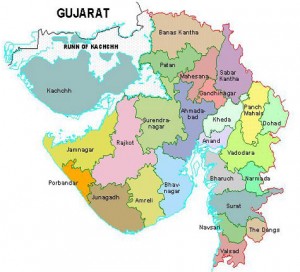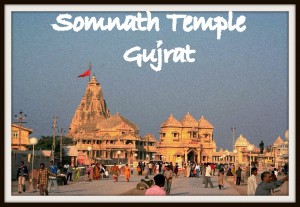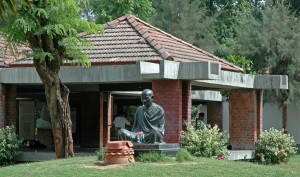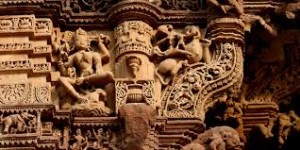[PDF] Download for Gujarat General knowledge nanu brithwalI’m Nitesh Brithwal Nanu , An Indian Engineer who is passionate about technology , current affairs , general Knowledge & programming . Constantly…
Gujarat

Gujarat is a state in Western India, here and there alluded to as the Jewel of Western India. It has a territory of 196,024 km2 with a coastline of 1,600 km the vast majority of which lies on the Kathiawar landmass, and a populace in overabundance of 60 million. The state is circumscribed by Rajasthan toward the north, Maharashtra toward the south, Madhya Pradesh toward the east, and the Arabian Sea and the Pakistani region of Sindh toward the west. Its capital city is Gandhinagar, while its biggest city is Ahmedabad. Gujarat is home to the Gujarati-talking individuals of India.

The state incorporates some destinations of the old Indus Valley Civilization, for example, Lothal and Dholavira. Lothal is accepted to be one of the world’s first seaports. Gujarat’s seaside urban communities, essentially Bharuch and Khambhat, served as ports and exchanging focuses in the Maurya and Gupta domains, and amid the progression of illustrious Saka administrations from the Western Satraps period, whose geographic regions included Saurashtra and Malwa: current Gujarat, South Sindh, Rajasthan, Maharashtra and Madhya Pradesh states.
Gujarat was known not Ancient Greeks, and was recognizable in other Western focuses of development through the end of the European Middle Ages.
Verifiably, the condition of Gujarat has been one of the fundamental focuses of the Indus Valley Civilization. It contains some antiquated metropolitan urban areas from the Indus Valley, for example, Lothal, Dholavira, and Gola Dhoro. The old city of Lothal was the place India’s first port was set up. The antiquated city of Dholavira is one of the biggest and most unmistakable archeological locales in India, having a place with the Indus Valley Civilization. The latest revelation was Gola Dhoro. Inside and out, around 50 Indus Valley settlement ruins have been found in Gujarat.

Gujarat has a variety of museums on different genres that are run by the state’s Department of the Museums located at the principal states museum, Baroda Museum and Picture Gallery in Vadodara(Gujarat) which is also the location of the Maharaja Fateh Singh Museums. The Kirti Mandir, Porbandar, Sabarmati Ashram, and Kaba Gandhi No Delo are museums related to Mahatma Gandhi, the former being the place of his birth and the latter two where he lived in his lifetime. Kaba Gandhi No Delo in Rajkot(Gujarat) exhibits part of a rare collections of photographs relating to the life of Mahatma Gandhi. Sabarmati Ashram is the place where Gandhi initiated the Dandi March. On 12 /03/1930 he vowed that he would not return to the Ashram until India won independence.
HISTORY OF GUJARAT:

The old history of Gujarat was advanced by the business exercises of its tenants. There is clear chronicled proof of exchange and business ties with Egypt, Bahrain and Sumer in the Persian Gulf amid the time of 1000 to 750 BC. There was a progression of Hindu and Buddhist states, for example, the Mauryan Dynasty, Western Satraps, Satavahana tradition, Gupta Empire, Chalukya administration, Rashtrakuta Empire, Pala Empire and Gurjara-Pratihara Empire, and additionally nearby lines, for example, the Maitrakas and after that the Solankis.
In the mid eighth century some parts of Gujarat was ruled by the south Indian Chalukya line. In the mid eighth century the Arabs of the Umayyad Caliphate set up an Empire which extended from Spain in the west to Afghanistan and Pakistan in the east. The Arab rulers attempted to grow their domain in the eighth century and attacked Gujarat yet the Arab intruders were crushed by the south Indian general Pulakesi who was sent by the south Indian Emperor Vikramaditya II of the Chalukya Dynasty. After this triumph the Arab intruders were driven out of Gujarat. Pulakesi got the title Avanijanashraya (asylum of the general population of the earth) by Vikramaditya II for the security of Gujarat. In the late eighth century the Kannauj Triangle period began. The 3 noteworthy Indian Dynasties the northwest Indian Gurjara-Pratihara Dynasty, the south Indian Rashtrakuta Dynasty and the east Indian Pala Empire ruled India from the eighth to tenth hundreds of years. Amid this period the northern piece of Gujarat was ruled by the north Indian Gurjara-Pratihara Dynasty and the southern piece of Gujarat was ruled by the south Indian Rashtrakuta Dynasty. Southern Gujarat was ruled by the south Indian Rashtrakuta administration until it was caught by the south Indian ruler Tailapa II of the Western Chalukya Empire.
Aurangzeb, who was better known by his supreme title Alamgir (“Conqueror of the World”), was conceived at Dahod, Gujarat, and was the 6th Mughal Emperor administering with an iron clench hand over the majority of the Indian subcontinent. He was the third child and 6th offspring of Shah Jahan and Mumtaz Mahal. At the season of his introduction to the world, his dad, Shah Jahan, was then the Subedar (representative) of Gujarat whilst his (Shah Jahan’s) father, Jehangir, was the Mughal Emperor. Before he got to be head, Aurangzeb was made Subedar of Gujarat as a major aspect of his preparation and was positioned at Ahmedabad. Aurangzeb was a striking expansionist and was amongst the wealthiest of the Mughal rulers with a yearly tribute of £38,624,680 (in 1690). Amid his lifetime, triumphs in the south extended the Mughal Empire to more than 3.2 million square kilometers and he administered over a populace assessed as being in the scope of 100–150 million subjects.
LANGUAGE:

Gujarati (ગુજરાતી ) is an Indo-Aryan dialect advanced from Sanskrit and nearby Prakrits, and is a piece of the more noteworthy Indo-European dialect family. It is local to the Indian condition of Gujarat, and is its principle dialect, and also of the nearby union domains of Daman and Diu and Dadra and Nagar Haveli.
Around 59 million individuals communicate in Gujarati, making it the 26th most-talked local dialect on the planet. Alongside Romani, Kutchi, and Sindhi, it is amongst the most western of Indo-Aryan dialects.
The people customs of Gujarat incorporate bhavai and rass-garba. Bhavai is a society theater; it is somewhat amusement and mostly custom, and is committed to Amba. The rass-garba is a society move done as a festival of Navratri by Gujarati individuals. The society ensemble of this move is chaniya choli for ladies and kedia for men. Distinctive styles and ventures of garba incorporate dodhiyu, basic five, straightforward seven, popatiyu, trikoniya (hand development which frames a symbolism triangle), lehree, tran taali, butterfly, hudo, two applauds and some more. Makar Sankranti is a celebration where individuals of Gujarat fly kites. In Gujarat, from December through to Makar Sankranti, individuals begin getting a charge out of kite flying. Undhiyu, a unique dish made of different vegetables, is an absolute necessity have of Gujarati individuals on Makar Sankranti. Surat is particularly understood for the solid string which is made by applying glass powder on the column string to give it a bleeding edge. Aside from Navratri and Uttarayana, Diwali, Holi, Tazia and others are likewise celebrated.
Latest general knowledge Gk question and answer from Gujrat Q1. When was Gujarat established? Ans- 1 May 1960. Q2- What is the capital of Gujarat? Ans-Gandhinagar. Q3. How many Districts…
Here are the Gujarat- General knowledge and current affairs Gk-2022 for competitive Exams Q1. When was Gujarat established? Ans- 1 May 1960. Q2- What is the capital of Gujarat? Ans-Gandhinagar….
